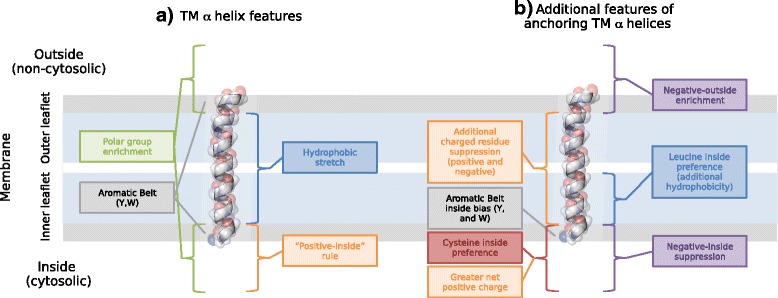Fig. 8.

Residue distributions of transmembrane anchors. A view showing additional residue distribution features that TMHs with an anchorage function display. a The more classic model of a TMH showing the "positive-inside" rule [12], the hydrophobic core [52], the polar enrichment that flanks the hydrophobic stretch [13] and the aromatic belt [14]. b Simple anchors may display additional features that conform to the membrane biophysical constraints: further suppression of charge in the hydrophobic core (Table 1), intra-membrane leucine asymmetry that likely causes hydrophobic skew [9] (Table 4, Fig. 5), a higher preference for cysteine on the inside flanking region (Fig. 7k and l), a higher net "positive-inside" charge (Additional file 1: Figure S1), asymmetric skew of the hydrophobic belt favouring the inner leaflet interface (Fig. 7e, f, g and h) and a negative-outside bias via suppression on the inside flanking region or enrichment on the outside flanking region (Fig. 7c and d, Tables 2 and 3)
